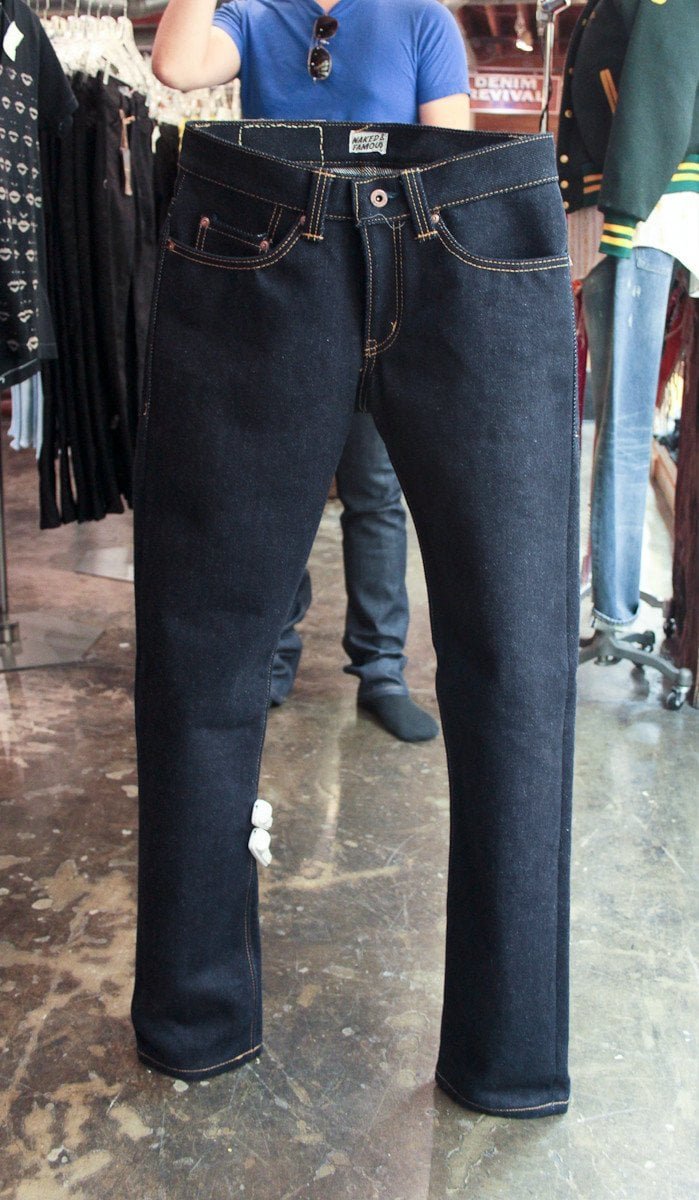A pair of jeans typically weighs around 1 to 2 pounds. The weight can vary based on the fabric, style, and size of the jeans. However, have you ever wondered why jeans have a certain weight and what factors contribute to it? Exploring the weight of jeans can unveil interesting insights into their construction and materials. Join us on a journey to discover how much does a pair of jeans weigh and the secrets behind their weight variance.
How Much Does a Pair of Jeans Weigh?
Jeans are a staple in most people’s wardrobes. They are versatile, comfortable, and come in various styles and colors. Have you ever wondered how much a pair of jeans actually weighs? In this article, we’ll dive into the world of denim and explore the factors that determine the weight of a pair of jeans.
The Basics of Jeans
Before we delve into the weight of jeans, let’s take a moment to understand what jeans are made of. Jeans are typically made from denim, a sturdy cotton twill fabric that is known for its durability and comfort. Denim is woven in a way that creates a diagonal ribbing pattern, making it strong and resistant to tears.
Factors that Affect the Weight of Jeans
Several factors can influence the weight of a pair of jeans. Let’s explore some of the key elements that contribute to the overall weight of jeans:
1. Denim Weight
One of the most significant factors that determine the weight of jeans is the weight of the denim itself. Denim fabric comes in various weights, typically measured in ounces per square yard (oz/yd²). Lightweight denim, such as 8 to 10 oz, will result in a lighter pair of jeans, whereas heavyweight denim, around 12 to 16 oz, will make a heavier pair.
2. Style and Design
The style and design of jeans can also impact their weight. Jeans with added embellishments like studs, embroidery, or patches will be heavier than a basic pair of jeans. Similarly, jeans with a thicker waistband, larger belt loops, or multiple pockets will add to the overall weight.
3. Size of the Jeans
The size of the jeans plays a significant role in determining their weight. Larger-sized jeans will require more fabric, making them heavier than smaller-sized jeans. Additionally, jeans with a higher rise or longer inseam will also contribute to their weight.
4. Hardware and Accessories
The hardware and accessories used in jeans, such as buttons, rivets, zippers, and decorative studs, can add to their weight. Heavier hardware and intricate designs will increase the overall weight of the jeans.
Weight Ranges of Different Types of Jeans
Now that we’ve discussed the factors that influence the weight of jeans, let’s explore the typical weight ranges of different types of jeans:
1. Skinny Jeans
Skinny jeans are known for their snug fit and tapered leg. These jeans are often made from lightweight denim, ranging from 8 to 10 oz, making them relatively light compared to other styles.
2. Bootcut Jeans
Bootcut jeans feature a slight flare at the hem, allowing them to fit over boots easily. These jeans typically use mid-weight denim, around 10 to 12 oz, providing a balance between comfort and durability.
3. Straight-Leg Jeans
Straight-leg jeans have a consistent width from the thigh to the hem, offering a classic and versatile look. These jeans are often made from medium to heavyweight denim, ranging from 10 to 14 oz, to maintain their structured silhouette.
4. Boyfriend Jeans
Boyfriend jeans are known for their relaxed fit and slouchy style. These jeans typically use heavier denim, around 12 to 16 oz, to achieve the desired loose and casual look.
In conclusion, the weight of a pair of jeans can vary depending on several factors such as the denim weight, style, size, and hardware used. Understanding these elements can help you choose the right pair of jeans that not only fits your style but also provides the desired level of comfort and durability. Next time you pick up a pair of jeans, take a moment to appreciate the craftsmanship and design that goes into creating this timeless wardrobe staple.
How Much Do Jeans Weigh?
Frequently Asked Questions
How can I determine the weight of a pair of jeans?
To determine the weight of a pair of jeans, you can use a simple household scale. First, make sure the scale is set to measure in pounds or kilograms. Then, place the jeans on the scale and wait for the reading to stabilize. The displayed weight will give you an accurate measurement of how much the pair of jeans weighs.
Do different styles or sizes of jeans weigh the same?
No, the weight of a pair of jeans can vary depending on factors such as the fabric thickness, decorative embellishments, and size. Generally, jeans with embellishments like studs or embroidery may weigh more than a basic pair of jeans. Additionally, larger sizes of jeans will typically weigh more than smaller sizes due to the extra fabric used in production.
Are there any ways to estimate the weight of a pair of jeans without a scale?
If you don’t have a scale available, you can estimate the weight of a pair of jeans by considering the fabric thickness and the overall size of the jeans. Thicker denim fabrics tend to be heavier, while slim-fit or skinny jeans may weigh less than bootcut or relaxed-fit styles. However, for accurate measurements, it is best to use a scale to determine the exact weight of the jeans.
Final Thoughts
A pair of jeans typically weighs around one to two pounds. Factors such as the material, size, and style can influence the weight. Knowing how much does a pair of jeans weigh is useful for packing, shipping, and overall convenience. Next time you’re wondering about the weight of your jeans, consider these factors. Ultimately, the weight of your jeans is a small, yet practical detail to be aware of.

